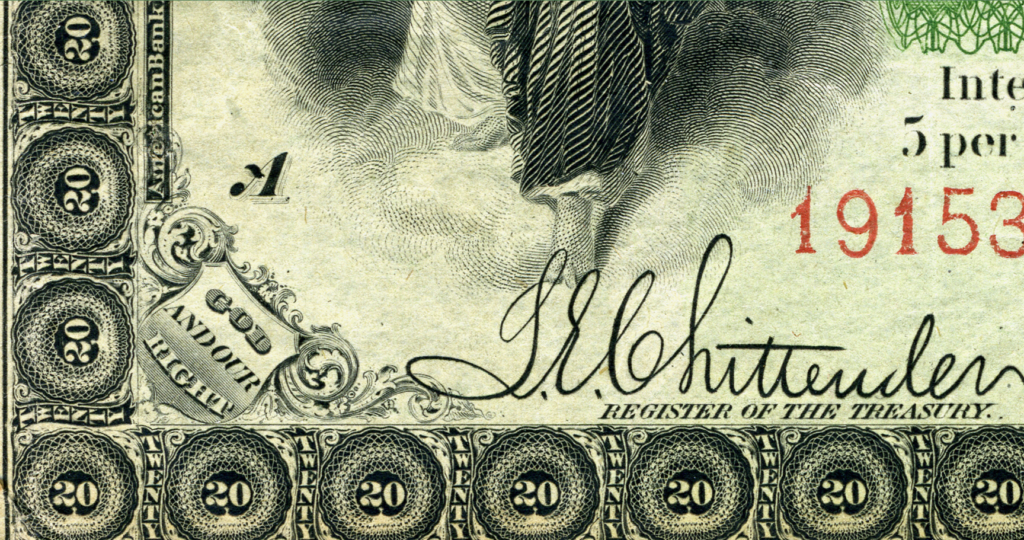On 22 April 1864, during the US Civil War, Congress enacted the Coinage Act, authorising the director of the mint with the approval of the Secretary of the Treasury to fix mottoes on one- and two-cent coins.
Secretary Samuel P Chase had already approved “In God we trust”, and the new coins came into circulation.
There is a symmetry although not a direct link with the 50-year old US national anthem penned in 1814 – during the War of 1812 the one that ran to 1815 – as the last stanza includes the line, “And this be our motto: ‘In God is our trust.'”
There has been an unsurprising slew of litigation about whether the motto violates the First Amendment (“Congress shall make no law respecting an establishment of religion…”)
Chase had made his choice in December 1863, but other mottoes were being tried on notes.
Of interest to republicans as much as religionists is the obverse side of a $20 interest-bearing note issued earlier in April 1864. It has two mottoes.
First, on the bottom right, “In God is our trust”, a different but uncontroversial version of what would soon be.
Secondly, on the bottom left, “God and our Right”. This is curious although, as far as I can see, without comment.
“Dieu et mon droit” has been the motto of the English kings since Richard the Lionheart used it as a battle cry, the “right” being the distinctly unrepublican proposition that the monarch has a God-given right of rule over their subjects. The motto is personal, meaning that the monarch is not using “the royal we”; when the cry goes up, the monarch is declaring their personal authority from God.
It is delicious to think that the officers of the mint in wartime Washington DC were doing their republican bit to pluralise for the people the divine but hitherto singularly monarchic right to rule. The triumph a century later of “In God we trust” over “E pluribus unum” is a tale for another day.
